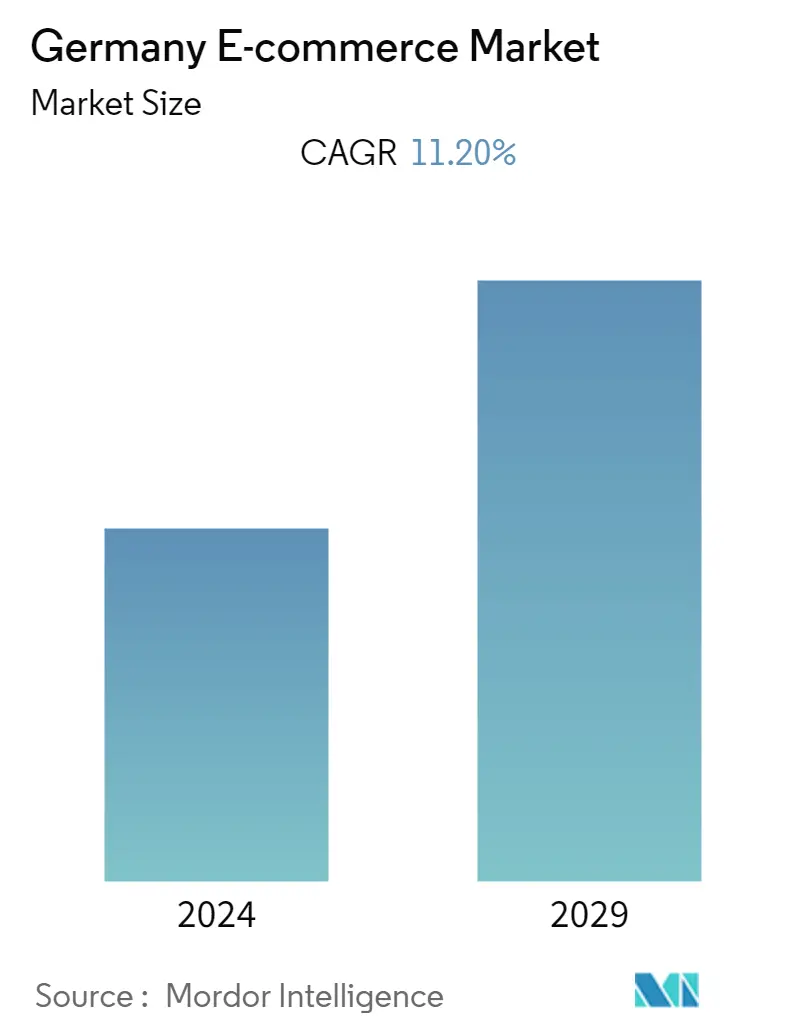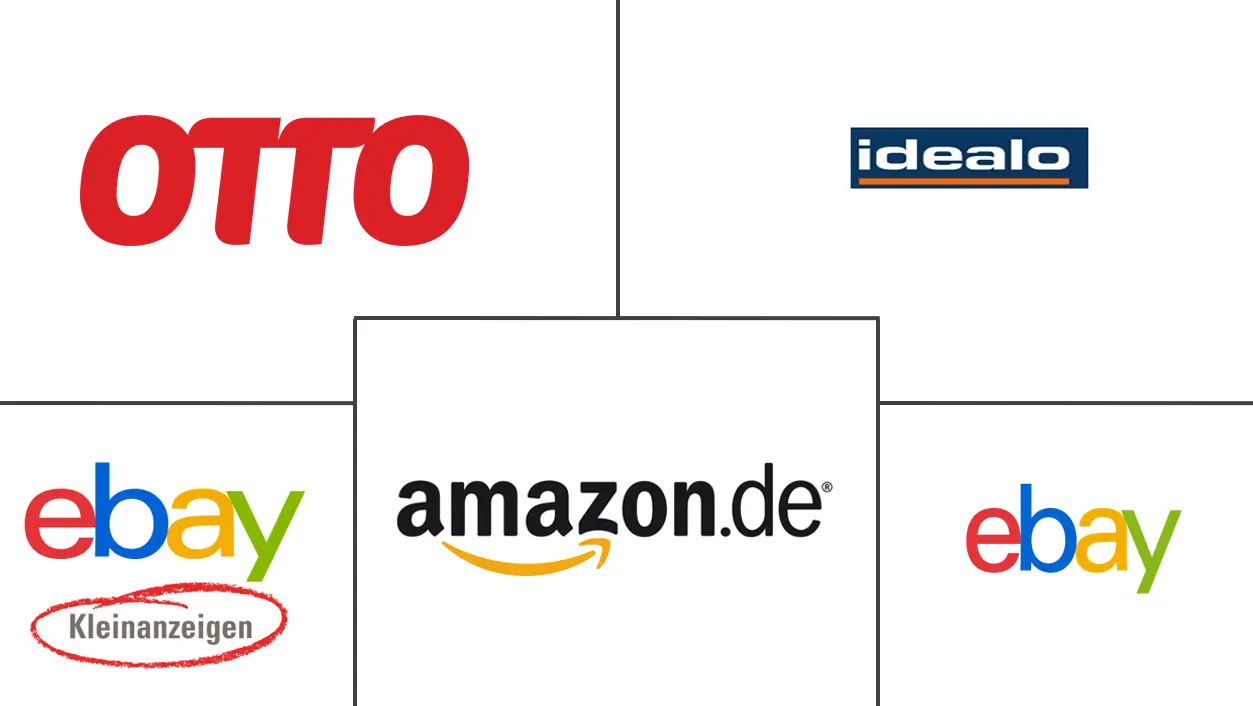Market Size of Germany E-commerce Industry

| Study Period | 2019 - 2029 |
| Base Year For Estimation | 2023 |
| Forecast Data Period | 2024 - 2029 |
| Historical Data Period | 2019 - 2022 |
| CAGR | 11.20 % |
| Market Concentration | Low |
Major Players
*Disclaimer: Major Players sorted in no particular order |
Need a report that reflects how COVID-19 has impacted this market and its growth?
Germany E-commerce Market Analysis
The German e-commerce market is expected to register a CAGR of 11.2% from 2022 to 2027. The market is primarily driven by high internet penetration, rising urbanization, and an increase in mobile shopping.
- The high internet penetration and the increasing adoption of smart devices in the region are primarily driving the market for e-commerce platforms. Due to the rising urbanization, several conventional businesses are inclined toward e-commerce platforms to expand their consumer base and market share, control overhead costs, and improve product sales.
- Most online stores in Germany accept PayPal and credit cards as payment methods. Many websites accept bank transfers, invoice/buy now, and pay later. Online customers can cancel orders and return goods or services within 14 days, for any reason and with no justification. With so many advantages that e-commerce companies offer, the region's e-commerce market is further expected to grow over the forecast period.
- Furthermore, mobile shopping has become more prevalent in the region, and instant payments suit the needs of modern consumers. Additionally, smartphone usage is growing faster in Germany, increasing the use of e-wallet payment methods. This growth is expected to continue as retailers improve their mobile websites and provide more convenient shopping methods on mobile devices.
- However, if an e-commerce company wishes to reach potential customers in Germany via its website or web store, it must comply with some rules and regulations, such as VerpackG. According to the law, manufacturers, distributors, or importers of packaging or packaged products must contribute to the disposal costs to assume responsibility for the product and its return and disposal. The VerpackG affects manufacturers, distributors, or importers of sales packaging: packaging that typically accumulates as waste for the end consumer. This type of regulation can hamper the growth of the e-commerce market in Germany.
- The appearance of the COVID-19 outbreak and its spread across the globe has changed the lives of millions of people. During the COVID-19 pandemic, Germany was exposed to the imposition of travel restrictions, lockdowns, and shop and service points closure. Consequently, COVID-19 changed the habits of consumers as well as shopping channel preferences. The growth of online shopping reshapes the German retail market and causes companies to adapt to changed market requirements.
